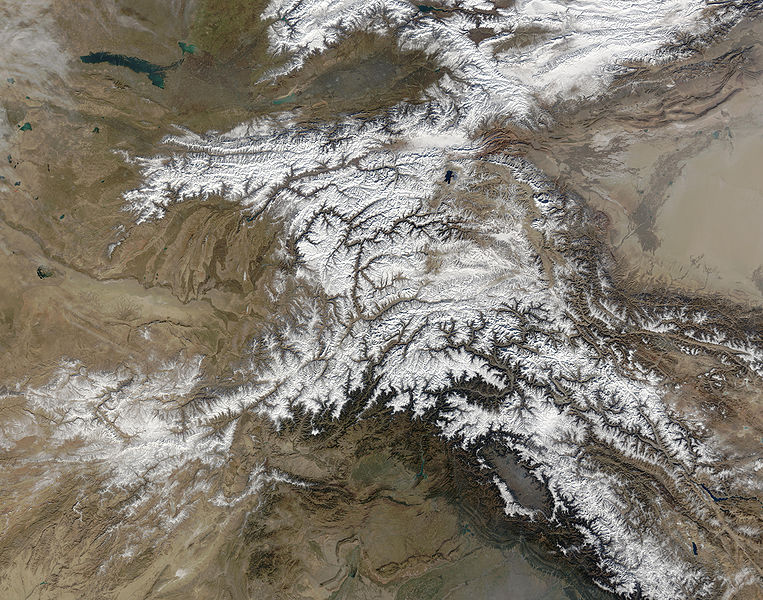Файл:Hindu Kush satellite image.jpg

Алдан карауның зурлыгы: 763 × 600 нокта. Башка ачыклык: 306 × 240 нокта | 611 × 480 нокта | 978 × 768 нокта | 1280 × 1006 нокта | 2560 × 2011 нокта | 5600 × 4400 нокта.
Төп файл (5600 × 4400 нокта, файл зурлыгы: 5,01 Мб, MIME төре: image/jpeg)
Файл тарихы
Файлның нинди булганлыгын күрү өчен «дата/вакыт» дигәненә басыгыз.
| Дата/вакыт | Кече рәсем | Үлчәмнәре | Кулланучы | Искәрмә | |
|---|---|---|---|---|---|
| агымдагы | 6 июн 2006, 04:39 |  | 5600 × 4400 (5,01 Мб) | Avenue | {{Information |Description=The Hindu Kush occupies the lower-left-center of this true-color MODIS satellite image, acquired 28 November 2003. |Source=[NASA's Earth Observatory http://earthobservatory.nasa.gov/Newsroom/NewImages/images.php3?img_id=16411] | |
Файлны куллану
Бу файлны кулланган битләр юк.
Файлның гомуми кулланышы
Әлеге файл аста бирелгән викиларда куллана:
- bcl.wikipedia.org проектында куллану
- bn.wikipedia.org проектында куллану
- ca.wikipedia.org проектында куллану
- el.wikipedia.org проектында куллану
- en.wikipedia.org проектында куллану
- es.wikipedia.org проектында куллану
- et.wikipedia.org проектында куллану
- eu.wikipedia.org проектында куллану
- fa.wikipedia.org проектында куллану
- fi.wikipedia.org проектында куллану
- it.wikipedia.org проектында куллану
- mk.wikipedia.org проектында куллану
- ml.wikipedia.org проектында куллану
- mr.wikipedia.org проектында куллану
- nl.wikipedia.org проектында куллану
- nn.wikipedia.org проектында куллану
- pa.wikipedia.org проектында куллану
- pl.wikipedia.org проектында куллану
- pnb.wikipedia.org проектында куллану
- pt.wikipedia.org проектында куллану
- ro.wikipedia.org проектында куллану
- sk.wikipedia.org проектында куллану
- sl.wikipedia.org проектында куллану
- sr.wikipedia.org проектында куллану
- ta.wikipedia.org проектында куллану
- tg.wikipedia.org проектында куллану
- th.wikipedia.org проектында куллану
- uz.wikipedia.org проектында куллану
- vi.wikipedia.org проектында куллану


